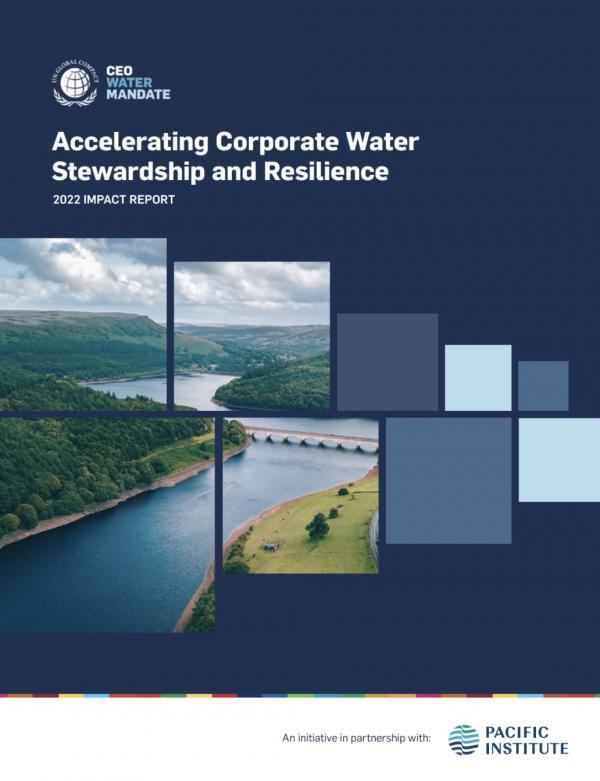CEO Water Mandate’s Inaugural Impact Report Launched
25 Aug 2023 by The Water Diplomat

The CEO Water Mandate (CEO WM), a special initiative established in 2007 by the UN Secretary-General and the UN Global Compact (UNGC) in partnership with the Pacific Institute, released its inaugural Impact Report for activities over 2022 and, at Stockholm Water Week, also released its 2022 Water Resilience Coalition impact report. Under its shirt term 2021-2023 strategy, the CEO Water Mandate aimed to ensure the upscaling of water stewardship practices by companies in critical locations and industry sectors. Already, the CEO WM is an umbrella body on water management practices for 234 companies worldwide.
The CEO WM strategy consists of a number of pillars: the first, perhaps predictably for the corporate sector, is to facilitate innovation and cutting edge thinking on water. More interestingly, the group has been working on building the business case for Nature Based Solutions (NBS). Because water supports nature in different ways in different settings, the business case for NBS plays out across many different possible paths of action for corporations to ensure benefits across water, carbon, biodiversity and socioeconomics. For example, the Impact Report mentions that invasive species removal can improve streamflow while also enhancing biodiversity. Planting mangroves can reduce coastal erosion, mitigate flooding and catalyze tourism. Restoring peat bogs can sequester carbon, improve drainage and support local ecosystems. The challenge for businesses is to monitor and report on industry activities on which positive impacts on nature are being expected: being able to quantify and value benefits from nature-based solutions is critical to make the business case for investment and demonstrating tangible results. Similarly in the socio-economic realm, the business case for investment in Water, Sanitation and Hygiene (WASH) requires bringing proof to the table of any investments in industry or community level WASH facilities. For instance, unsafe and unreliable drinking water, sanitation and hygiene services at work or at home directly affects worker health and safety, as well as undermining the security of business operations through its supply chains. Externally, lack of access to WASH facilities in communities where businesses operate and withdraw water directly affects company reputation, trust and license to operate.
A second area of reporting on the WM strategy is the area of Scaling for Impact. This rather tautological - or circular reasoning – around comprehensive reporting on impact of impact at scale becomes a little more accessible when CEO WM notes that “this year we focused on increasing direct uptake of innovative guidance and tools, while also convening more diverse private sector actors to advance our shared work. For instance, in Brazil, we established the first-ever Water Resilience Coalition Chapter to amplify the regional impact of collective actions.” Since its inception three years ago, 21 collective actions have been coordinated across 15 basins in 6 countries, and the coalition has expanded to 29 global companies with combined market capitalization of more than US$3 trillion. The Water Resilience Coalition’s 2030 Strategy aims to achieve quantifiable positive water impact in 100 identified water-stressed basins, contribute to water security for three billion people, and enable equitable access to WASH for 300 million people. In collaboration with the European Space Agency (ESA), the WRC launched a call for proposals to digitize water resilience monitoring.
Finally, the third pillar of the CEO Water Mandate seeks to raise the profile of water: communications is seen as key in calling for corporate action on water. For this reason, the Water Resilience Coalition released several high-level communications campaigns elevating key aspects of the Mandate’s thought leadership. One example of this is the communications around the concept of Net Positive Water Impact (NPWI), whereby actions of corporations aim to have a net positive impact on water resources in their area of operations.
